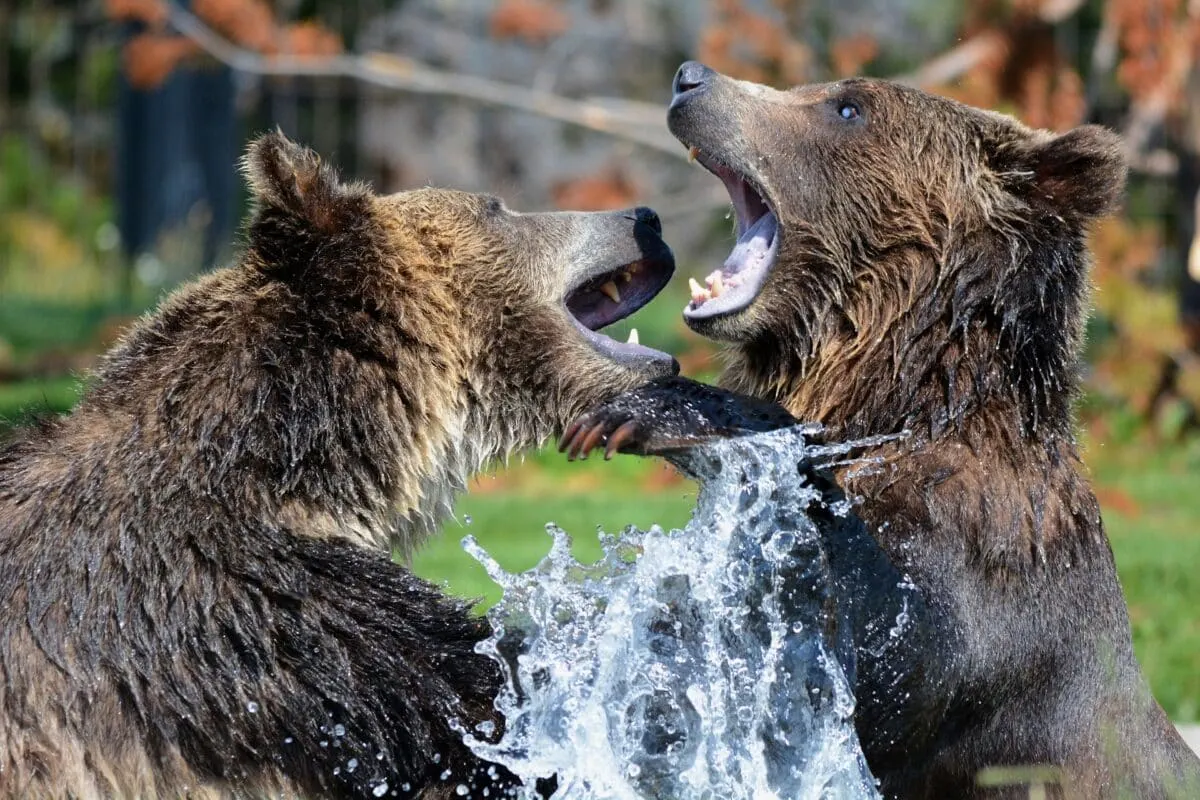The animal kingdom is full of fascinating and majestic creatures, and two of the most spectacular animals we often hear about are gorillas and brown bears. Similarly, these two powerful animals are admired for their immense strength, intelligence, and ferocity. Let’s dive into the comparison between the Gorilla vs. Brown bear.
However, when comparing these animals with each other, which stands out as the more dominant creature? Accordingly, this blog post will compare the gorilla and brown bears on various parameters, including size, strength, habitat, behavior, etc.
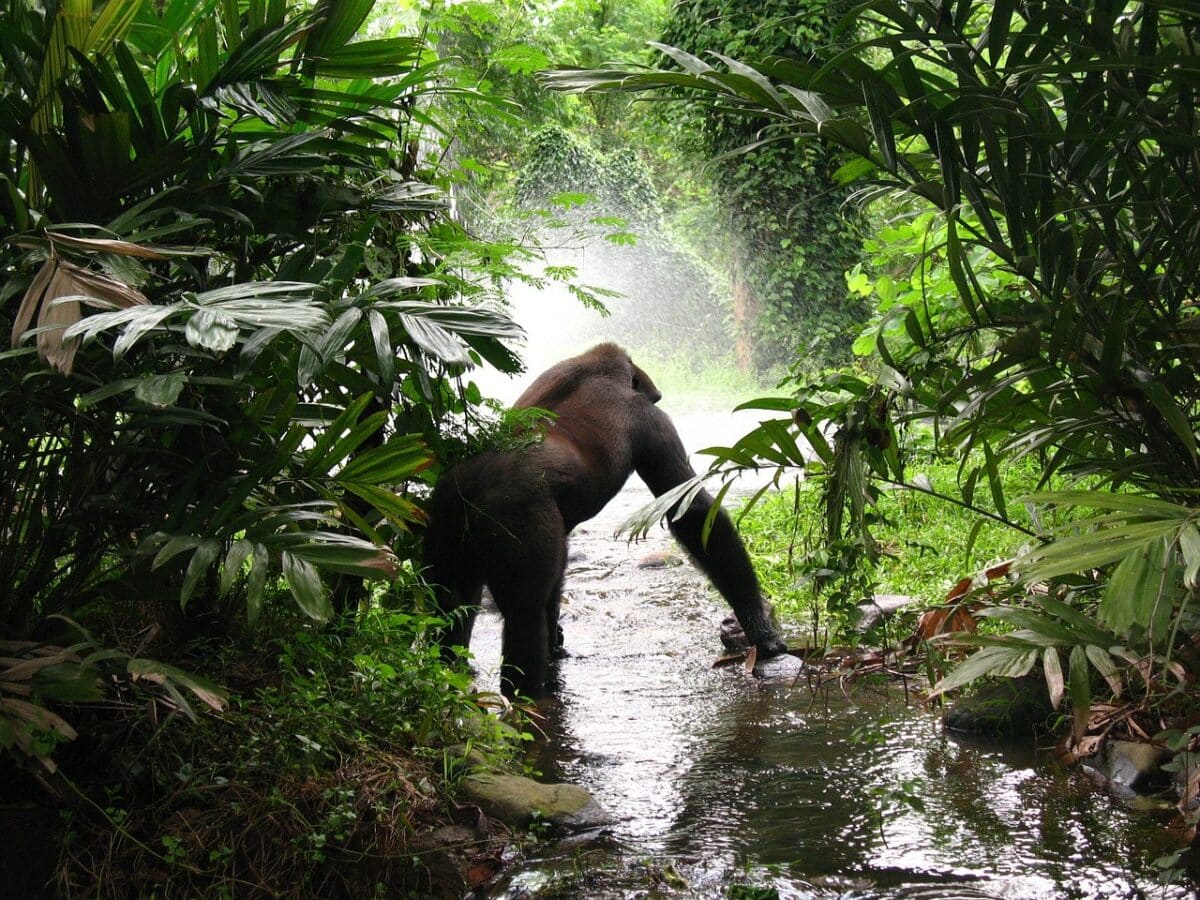
Skip ahead to any section below.
Comparison Table
| Feature | Gorilla | Brown Bear |
|---|---|---|
| Species | Western gorilla, Eastern gorilla, Cross River gorilla, Mountain gorilla | Brown bear (Ursus arctos) |
| Habitat | Tropical rainforests | Forests and mountains of northern North America, Europe, and Asia |
| Body Shape | Large and muscular build | Stocky build with a hump of muscle on their shoulders |
| Diet | Herbivorous, mainly feeding on fruits, leaves, shoots, and stems | Omnivorous, feeding on a wide variety of foods, including fish, berries, nuts, insects, and occasionally larger mammals |
| Behavior | Primarily peaceful and non-aggressive, but can display aggression when threatened | Generally solitary, but can be social during salmon runs or when foraging in groups |
Physical Characteristics of Gorillas
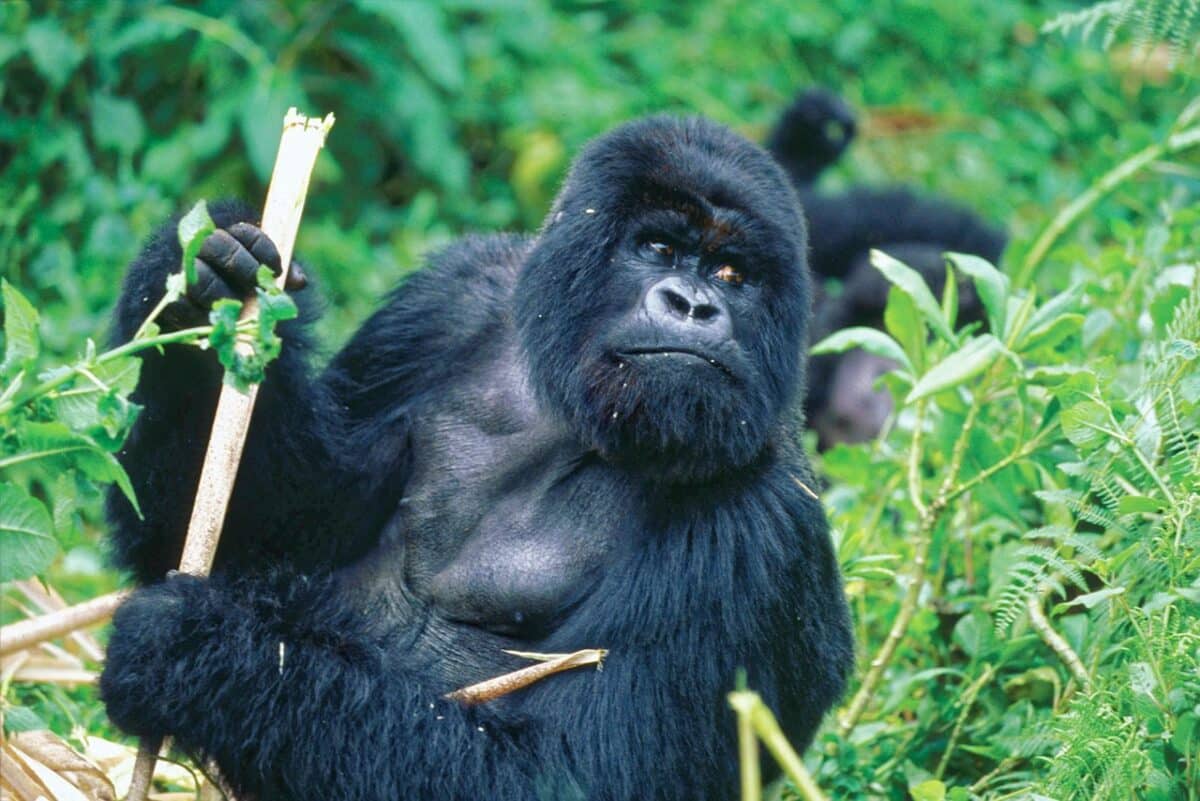
Height, Weight, and Size
Gorillas are considered one of the world’s largest primate species. This is because they have a unique body structure and anatomy, which makes them stand out from the rest of the ape species. On average, male gorillas can grow up to 6 feet tall and weigh around 350-450 pounds.
Conversely, the females are smaller, can grow up to 4-5 feet tall, and weigh around 150-250 pounds. Additionally, they have a robust and muscular body structure adapted to their lifestyle and environment.
Appearance and Body Structure
Gorillas have thick and long body hair that typically has black or brown color with a hint of gray in some parts. In addition, their face, hands, and feet are hairless with a dark skin color. They have broad chests and wide shoulders, exhibiting strength and muscular nature.
Furthermore, one of the most distinguishing physical characteristics of gorillas is their skull and facial structure. They have a prominent bony crest called the sagittal crest and a large jawbone and teeth used for crushing and grinding food.
Behavioral Characteristics of Gorillas
Gorillas exhibit complex social behavior and are known to live in cohesive groups called troops. In addition, these troops can consist of up to 30 individuals, where the dominant male, the Silverback, leads the group.
The Silverback also protects the troop and makes critical decisions regarding where to feed and rest. Gorillas are non-aggressive animals and prefer to resolve conflicts through display behaviors such as chest-beating, vocalizing, and posturing.
They are also known for their intelligent nature and have shown the ability to learn and use sign language in studies conducted in captivity.
Check out Battle Of The Giants: African Elephants versus the Javan Rhinoceroses.
Physical Characteristics of Brown Bears
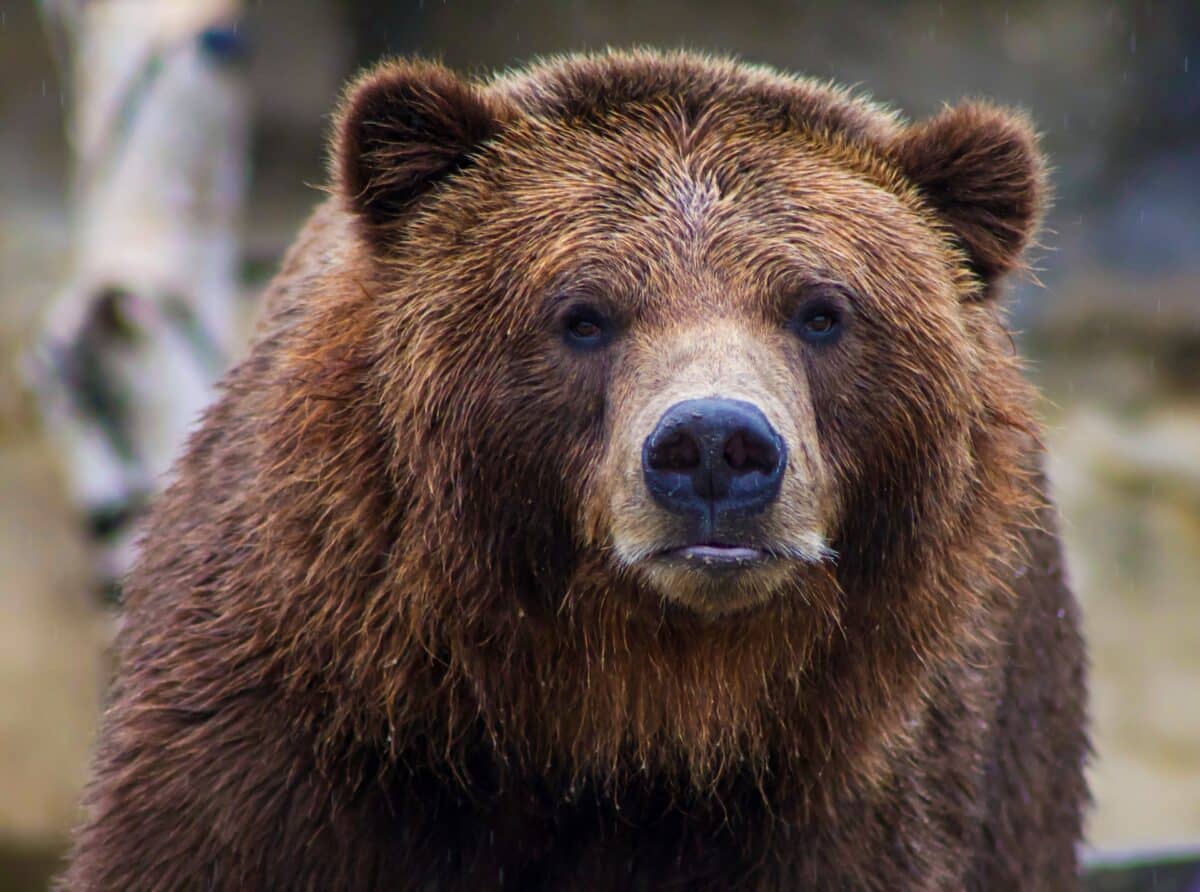
Height, Weight, and Size
Brown bears are known for their impressive size, with males typically weighing between 300 and 800 pounds and females weighing between 200 and 500 pounds.
Depending on their location, brown bears can grow between 6 and 10 feet tall when standing on their hind legs, with an average length of between 6 and 9 feet when measured from their nose to the tip of their tail.
These massive creatures can live for up to 25 years in the wild, and their size and strength make them one of the top predators in their ecosystem.
Appearance and Body Structure
Despite their name, brown bears can range from light brown to dark brown, with some appearing almost black. They typically have a thick fur coat that is made up of two layers, an outer guard hair layer that protects the skin from the elements and a soft undercoat that helps keep the bear warm in cold temperatures.
Brown bears also have a distinctive hump of muscle on their shoulders, which helps support their weight and gives them the strength needed to take down large prey. They have powerful jaws and long, sharp claws, making them formidable hunters and scavengers.
Behavioral Characteristics of Brown Bears
In addition to their impressive physical characteristics, brown bears exhibit several unique behavioral traits. They are known for their solitary nature, with adult bears usually living and traveling alone except during mating season.
Furthermore, brown bears are omnivores, with their diet consisting of plant and animal matter, including fruits, berries, nuts, fish, and small mammals. They are also known for their intelligence and problem-solving abilities and have been observed using tools such as rocks to break open hard-shelled foods like clams.
Despite their fearsome reputation, brown bears are relatively peaceful animals when left undisturbed and will usually only attack humans in self-defense or if they feel threatened.
Comparison of Gorillas vs. Brown Bears
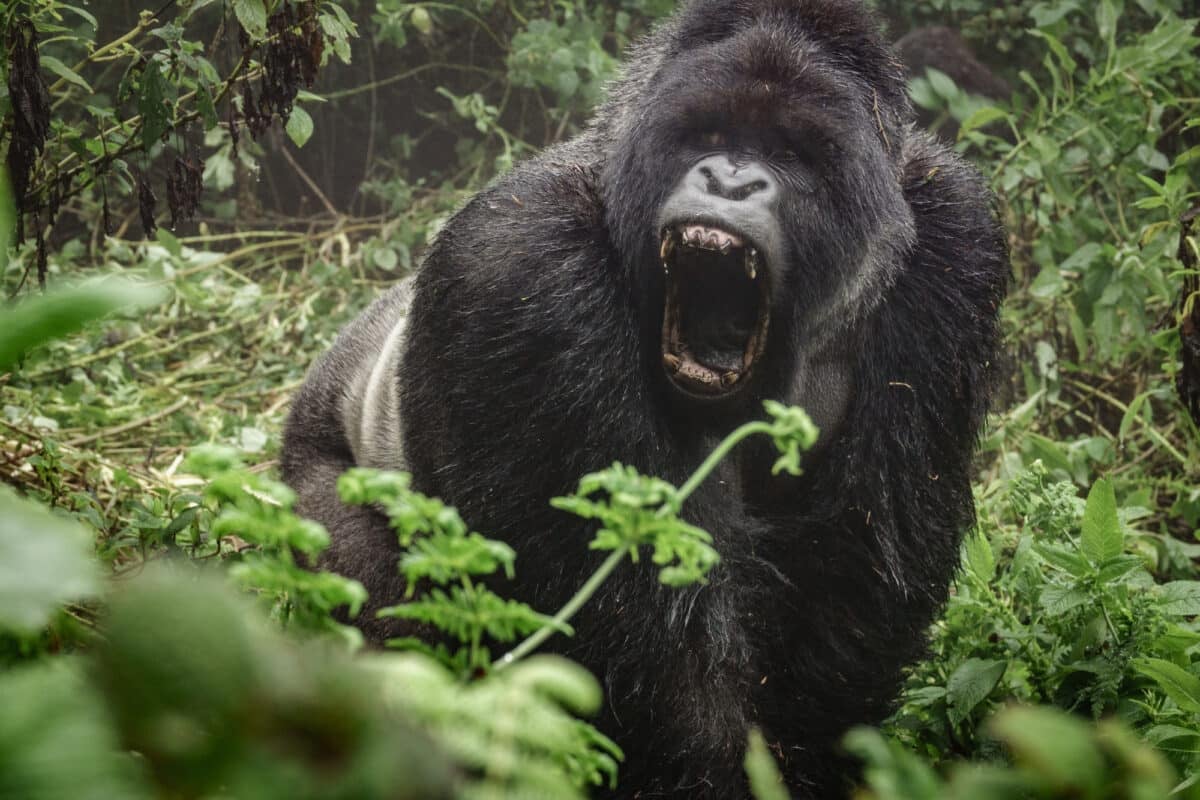
Habitat
Gorillas are native to the forested regions of central and eastern Africa, where they inhabit lowland and mountainous areas. Conversely, Brown Bears are found across the Northern Hemisphere, typically inhabiting woodlands, forests, and mountainous regions.
While Brown Bears prefer colder conditions, Gorillas, on the other hand, thrive in warmer climates. Both species require large areas to roam, but Gorillas tend to stay in one area, while Brown Bears can cover great distances in search of food.
Diet
They both are omnivores but have different dietary needs and preferences. Gorillas primarily feed on leaves, fruit, and stems, while Brown Bears have a much more varied diet, ranging from berries and fruits to fish, insects, and even larger prey like deer and elk.
Gorillas are herbivores and rely on a high-fiber diet to meet their nutritional needs, while Brown Bears will switch to a high-fat diet in the fall to store enough energy for their winter hibernation.
Strength and Aggression
Gorillas are well-known for their incredible strength and are considered one of the strongest primates. An adult male gorilla can weigh up to 400 pounds and exert a 600 to 800 pounds force. While Brown Bears are also strong, they can’t match the power of Gorillas.
However, Brown Bears are considered more aggressive than Gorillas and responsible for most fatal bear attacks worldwide. Conversely, Gorillas are generally peaceful and non-aggressive, but they can be protective of their young and occasionally exhibit territorial behavior.
Social Structure
Gorillas have a complex social structure, with dominant males leading a group of females and their offspring. The dominant male, the Silverback, protects the group and ensures their safety.
Brown Bears, on the other hand, are solitary animals except during mating season or when a female raises her cubs. However, mother bears fiercely protect their cubs and defend them against threats.
Reproductive Behavior
Gorillas and Brown Bears have different reproductive behaviors. Gorillas mate throughout the year, but females only conceive every two to four years. Males also compete for dominance to mate with the females in their group, and the dominant male usually has the most successful mating opportunities.
Brown Bears mate during the spring and summer, and females give birth to usually two or three cubs in the winter. The cubs will stay with their mother for up to three years before striking out independently.
Key Points: Gorilla vs. Brown Bear
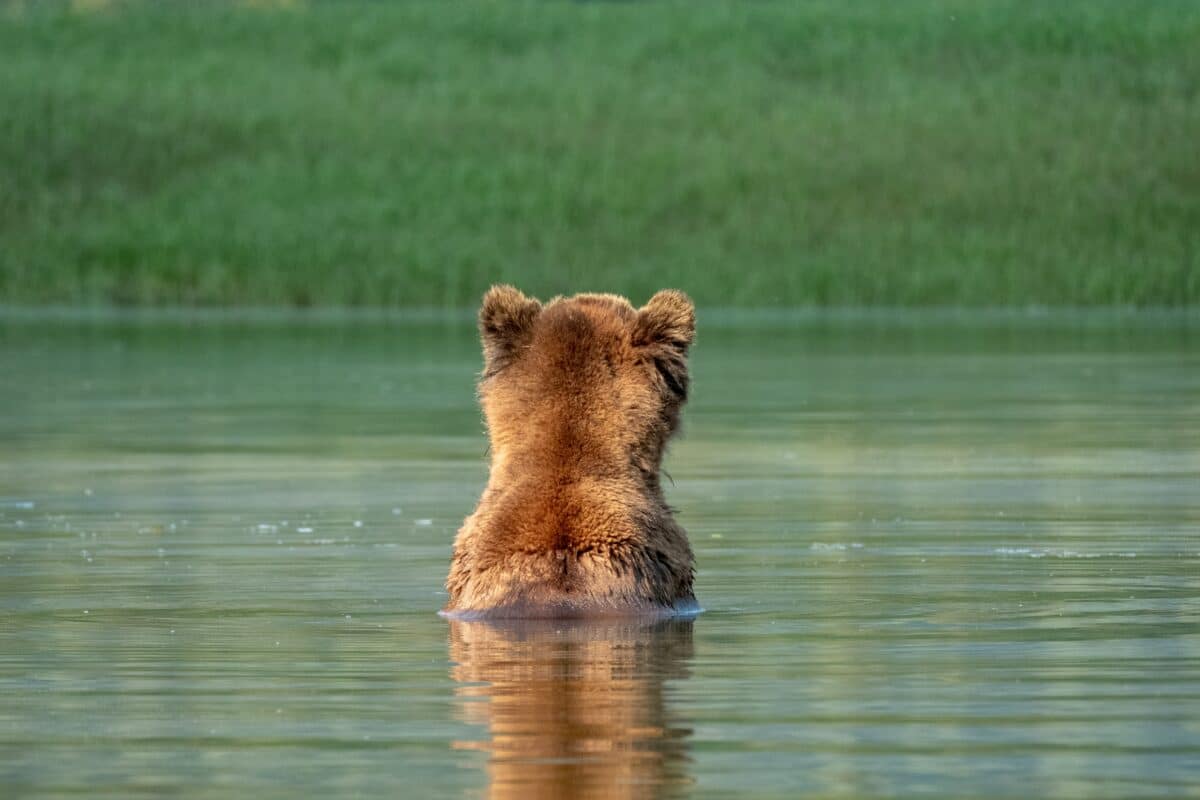
| Gorillas and Brown Bears are omnivores but have different dietary needs and preferences. |
| Brown bears are known for their impressive size, with males typically weighing between 300 and 800 pounds and females weighing between 200 and 500 pounds. |
| While Brown Bears prefer colder conditions, Gorillas, on the other hand, thrive in warmer climates. |
| Gorillas and Brown Bears are omnivores but have different dietary needs and preferences. |
| Brown Bears are considered more aggressive than Gorillas and responsible for most fatal bear attacks worldwide. |
Bottomline of Gorilla vs. Brown Bear
In summary, gorillas and brown bears are majestic creatures with unique traits, strengths, and skills. They live in different habitats and have other behaviors and diets. It’s hard to say which animal is better or superior as they are both animals that we should admire for their unique attributes.
Therefore, it’s essential to respect and appreciate these animals for who they are and remember that they are an indispensable part of the ecosystem and must be protected.
If you enjoyed reading this article, click on some of the listed articles to expand your knowledge even more! Gorilla versus Baboon the Primate Superstars, Gorilla and the Black Bear and Gorilla or the American Black Bear.
- Lion and Dog: An Unbreakable Bond of Friendship - October 20, 2024
- Top 10 Unusual Animal Friendships - October 20, 2024
- Skateboard-Loving Bulldog Guards His Prized Possession - October 20, 2024

